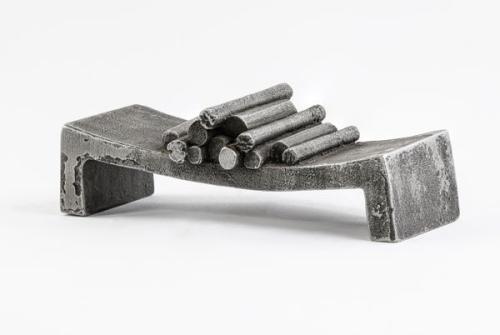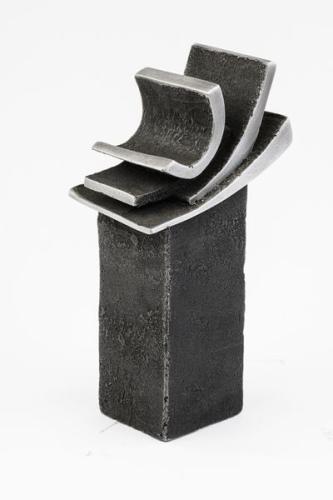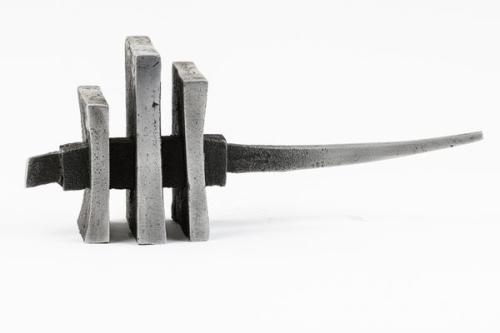
This object is eligible for a Certificate of BADA Provenance
The BADA Standard
- Since 1918, BADA has been the leading association for the antiques and fine art trade
- Members are elected for their knowledge, integrity and quality of stock
- Our clients are protected by BADA’s code of conduct
- Our dealers’ membership is reviewed and renewed annually
- Bada.org is a non-profit site: clients deal directly with members and they pay no hidden fees
Kenneth Armitage 1916-2002.
Sprawling Woman.
Bronze.
Date 1957.
Ed. 8/9.
Stamped KA 69, with foundry mark Susse Fondeur Paris.
PROVENANCE
Collection of Ivan Remnitz.
EXHIBITED
Modern Sculpture, Leeds City Art Gallery, 8 October – 5 November 1958, No.4 (original 1957 cast)
Kenneth Armitage, Whitechapel Art Gallery, London, July – August 1959, No.41 (original 1957 cast)
Kenneth Armitage, Lynn Chadwick, Kestner-Gesellschaft, Hanover, 12 April – 15 May 1960, No.14 (original 1957 cast)
LITERATURE
Norbert Lynton, Kenneth Armitage (London: Methuen, 1962), unpaginated (another cast illustrated)
Tamsyn Woollcombe, Kenneth Armitage: Life and Work (London: The Henry Moore Foundation in association with Lund Humphries, 1997), p.144, KA80.
James Scott and Claudia Milburn, The Sculpture of Kenneth Armitage (London: Lund Humphries, 2016), p.144, No. 77 (another cast illustrated)
At the Venice Biennale in 1958, the year in which Kenneth Armitage received a prize, he exhibited a large version of Sprawling Woman (1957). Displayed on a white plinth in the British Pavilion, the figure appeared suspended in a moment of tragicomedy: beached, legs and arms akimbo. The pose and its possible ramifications may be likened to the painting by Michael Andrews, A Man who Suddenly Fell Over (1952), in which the accident – a portly gentleman falling to the pavement – is witnessed by a horrified onlooker. Andrews was interested in the psychological implications of the scenario: the instant reversal of the man’s fortunes and his attempts to conceal embarrassment or possible injury. in As a sculptor, Armitage was fascinated by the effects of gravity, impact, movement or instability on forms. He drew attention to the arched back of Sprawling Woman, the spreading of its arms and legs and its overall ‘pronounced horizontal line.’(1) Realised at over life-size, there could be no mistaking the figure’s discomfiture. Armitage recalled how his friend Roger Hilton, a renowned joker, draped himself across the sculpture when it was exhibited at the Whitechapel Art Gallery in 1959, in a mock-amorous pose.
Armitage created a sequence of sculptures during this period showing figures lying on their side. In some, the torso is reduced almost to a barrel, the limbs to sticks. Sprawling Woman, by contrast, is unmistakably female: rounded in contour, yet possessing a distinct waist. (One contemporary critic, reviewing Armitage’s recent work, drew an analogy between high fashion and the waists – or the lack of them – in British figurative sculpture.) (2) In the smaller version of Sprawling Woman, Armitage presents the figure on a scale suited to a domestic environment. His original intention appears to have been to cast an edition of six, which at some point (as corroborated by gallery stocklists created during his lifetime) he extended to nine. The numbering KA69 tallies with his own inventory of works, identifying it as conceived in 1957. This cast, numbered 8/9, was bought by the collector Ivan Remnitz from a gallery in Caracas, where in 1963–4, following an invitation from the Director of the Museo de Bellas Artes, Miguel Aroyo, Armitage taught and worked for four months.
(1) Kenneth Armitage, in Tamsyn Woollcombe, Kenneth Armitage: Life and Work (London: The Henry Moore Foundation in association with Lund Humphries, 1997), p.44.
(2) ‘Form and image in British Sculpture: Mr. Kenneth Armitage’s Exhibition’, The Times, 22 October 1957, p.3.
Artist's Resale Right applies @ plus 4%
Dimensions
Height: 21.90cm, Width: 65.70cm, Depth: 25.40cmStock number
14892/MBThe BADA Standard
- Since 1918, BADA has been the leading association for the antiques and fine art trade
- Members are elected for their knowledge, integrity and quality of stock
- Our clients are protected by BADA’s code of conduct
- Our dealers’ membership is reviewed and renewed annually
- Bada.org is a non-profit site: clients deal directly with members and they pay no hidden fees




